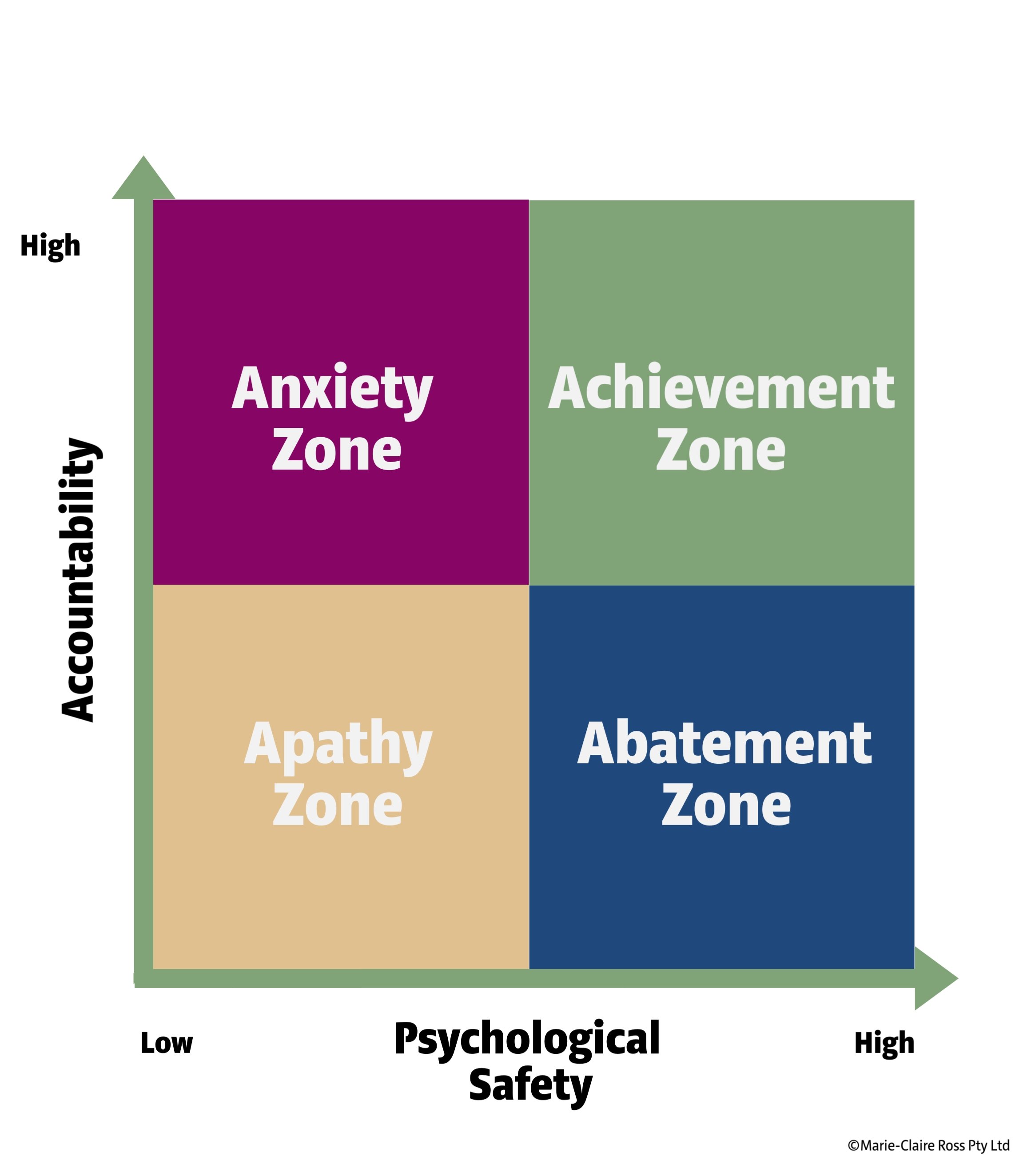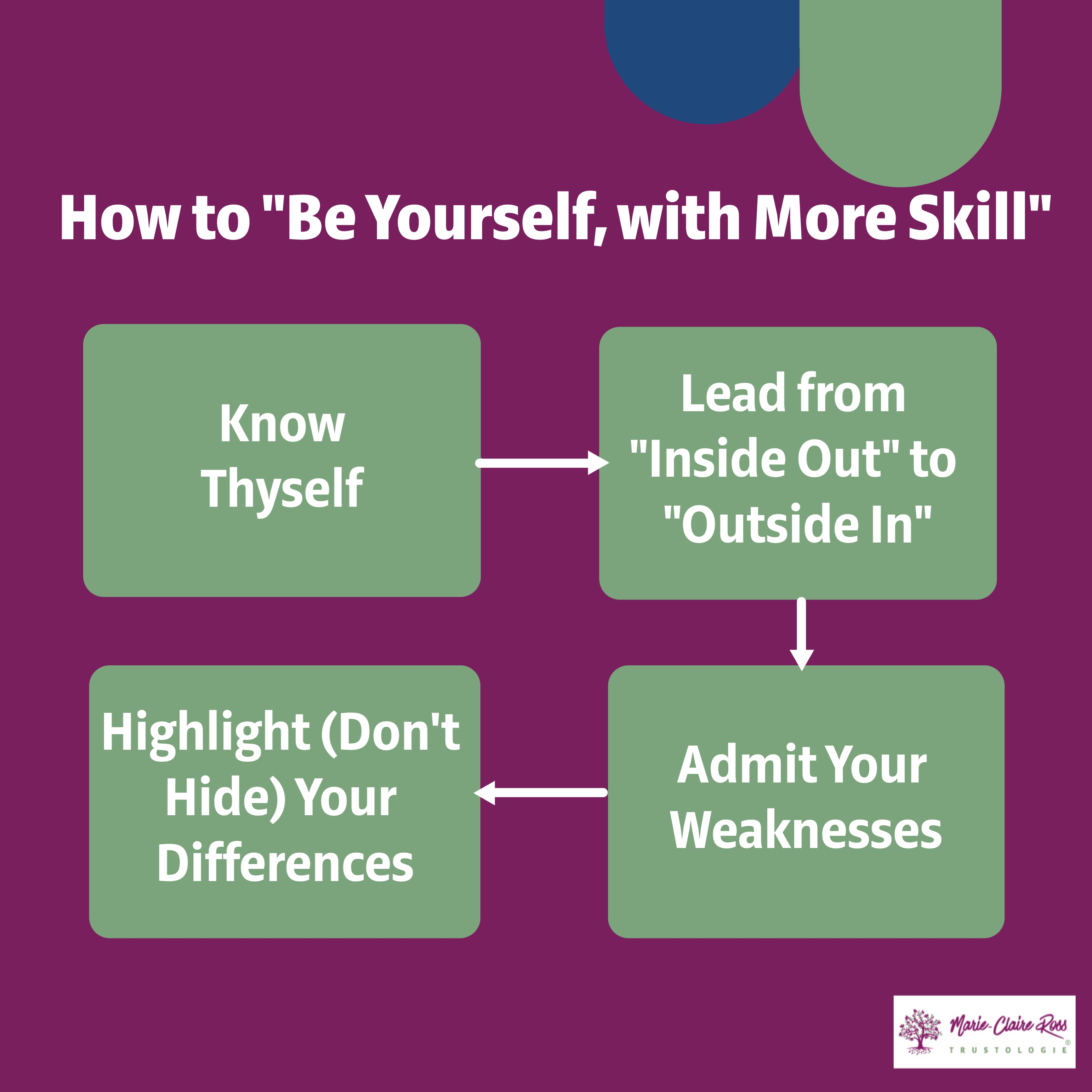
In the workplace, we all know the importance of accountability as a leader. Yet, rarely do we talk about how personal responsibility drives accountability.
As Kevin Cashman discusses in Leadership from the Inside Out, leadership isn't something we do. It comes from a deeper reality within us; it comes from our values, experiences, principles and essence. Leadership is an expression of who we are. We lead by virtue of who we are.
While that is certainly true to some extent, blindly leading with our values and beliefs and expecting other people to follow us is a tad narcissistic. After all, self-awareness is really about bridging the gap between how we see ourselves and how others see us.
We have to meet people where they are.
Working both inside out, followed by outside in, then striving to work both simultaneously is a far more effective leadership approach.
If you are leading a new team, working in a new country or company, then it's important to spend time on the outside. Staying humble, willing to listen and being open to learning.
Take the example of Ria Iyengar, an account director at Cossette. In a Fast Company interview, she discussed how she had to relearn how to conduct business and lead teams.
Finding herself in unfamiliar territory - being new in a different industry, working in a new country with new customs and cultures required being an outside leader.
This meant taking the time to observe and understand the differences, in order to identify what's important to integrate and where she needed to flex her own style in the everyday interactions with her team. The end goal was to no longer be seen as an outsider.
In the HBR article, "Why Should Anyone be Led by you?", the authors contend that the most important quality of inspirational leaders is that they capitalise on what’s unique about themselves. Interestingly, they found the most effective leaders deliberately use differences to keep a social distance. Even as they are drawing their followers close to them, inspirational leaders signal their separateness.
These differences might be a distinctive dress style or physical appearance. Of course, back when the article was written (in the year 2000), the world was a very different place. Today, we are somewhat more accepting of colour, being LGBTQIA+ or neurodiverse. Thankfully, these differentiators can be more openly owned without as much negative flack as in days gone by.
Other differentiators might be particular qualities such as a Star Trek obsession, deep expertise in an unusual topic or an insane ability to beatbox.
There are lots of different ways a leader can stand out as being different. What's most important is that they communicate it and not ignore it.
Take comedians. They call out what might be perceived as being different about them and use it to make people laugh with them and not against them. It's a perfect way to disarm an audience that might get hung up on what's not being said. Early in their act, they will make a joke about their height, their age, dyslexia, disability, hair style or even their level of attractiveness (or not).
Instead of allowing your differences to make you feel more separate from others, you can use it to motivate others to perform better. After all, we instinctively know that followers will push themselves if their leader is just a little aloof. Take the time to be fully aware of what makes you unique in a way that is in service to your team. This could be selecting a weakness that is actually a strength. An example could be being overly passionate about great customer service and explaining how this plays out.
Just make sure that you don't frame your uniqueness from the perspective of insecurity, being disingenuous or going overboard with your differentiation. You want to create some distance, but not too much, so that you don't lose the ability to identify and care about your audience. Or even worse, if it repels them.
One of the common beliefs about authenticity is that leaders must openly reveal their weaknesses. These are the behaviours or skills that can potentially cause issues in a workplace, if you don't let people know about them.
Dr Jeff Polzer, a Harvard professor says “People tend to think of vulnerability in a touchy-feely way, but that’s not happening. It’s about sending a really clear messages that you have weaknesses, that you could use help. And if that behaviour becomes a model for others, then you can set the insecurities aside and get to work, start to trust each other and help each other. If you don’t have that vulnerable moment, people will cover up their weaknesses and their insecurities manifest themselves in tasks."

The trick is to ensure we are leading with the personality traits that work for us, our teams and our companies - and not against us. Learn to be who you are more intentionally. Know when it's important to invoke a sidelined personality trait or drop it all together. Work on reducing poor behaviours that are toxic to others. Don't let your emotions or behaviours run you - learn to run yourself.
The good news is that you don't have to eliminate parts of who you are or constrain yourself unnecessarily. It just means being more present to who you really are and more skilful in how you show up.
If you want some help to get you started, download my complimentary Trusted Leader Self- Assessment.

In the workplace, we all know the importance of accountability as a leader. Yet, rarely do we talk about how personal responsibility drives accountability.

Recently, one of the biggest complaints that I have been hearing about leaders is how a lack of self-awareness is impacting their performance. Employees complain about...